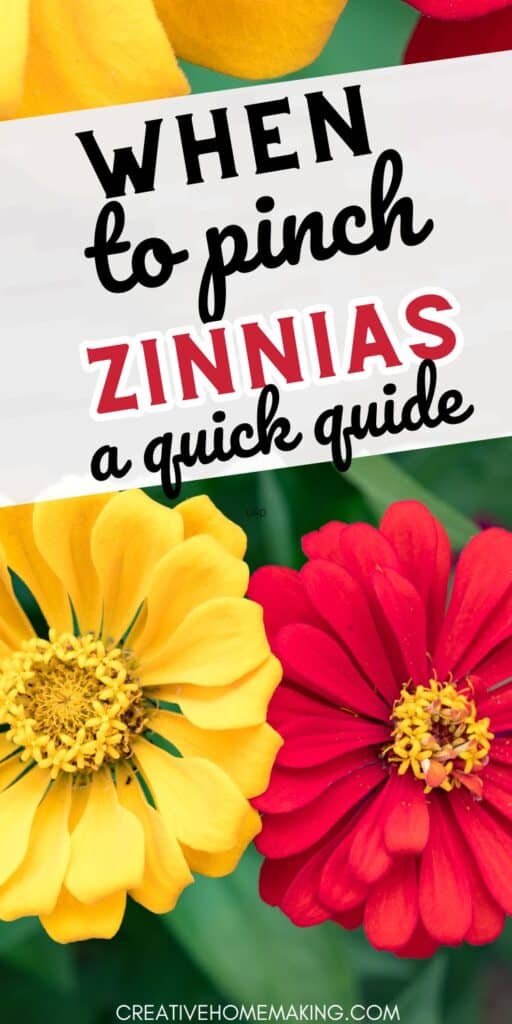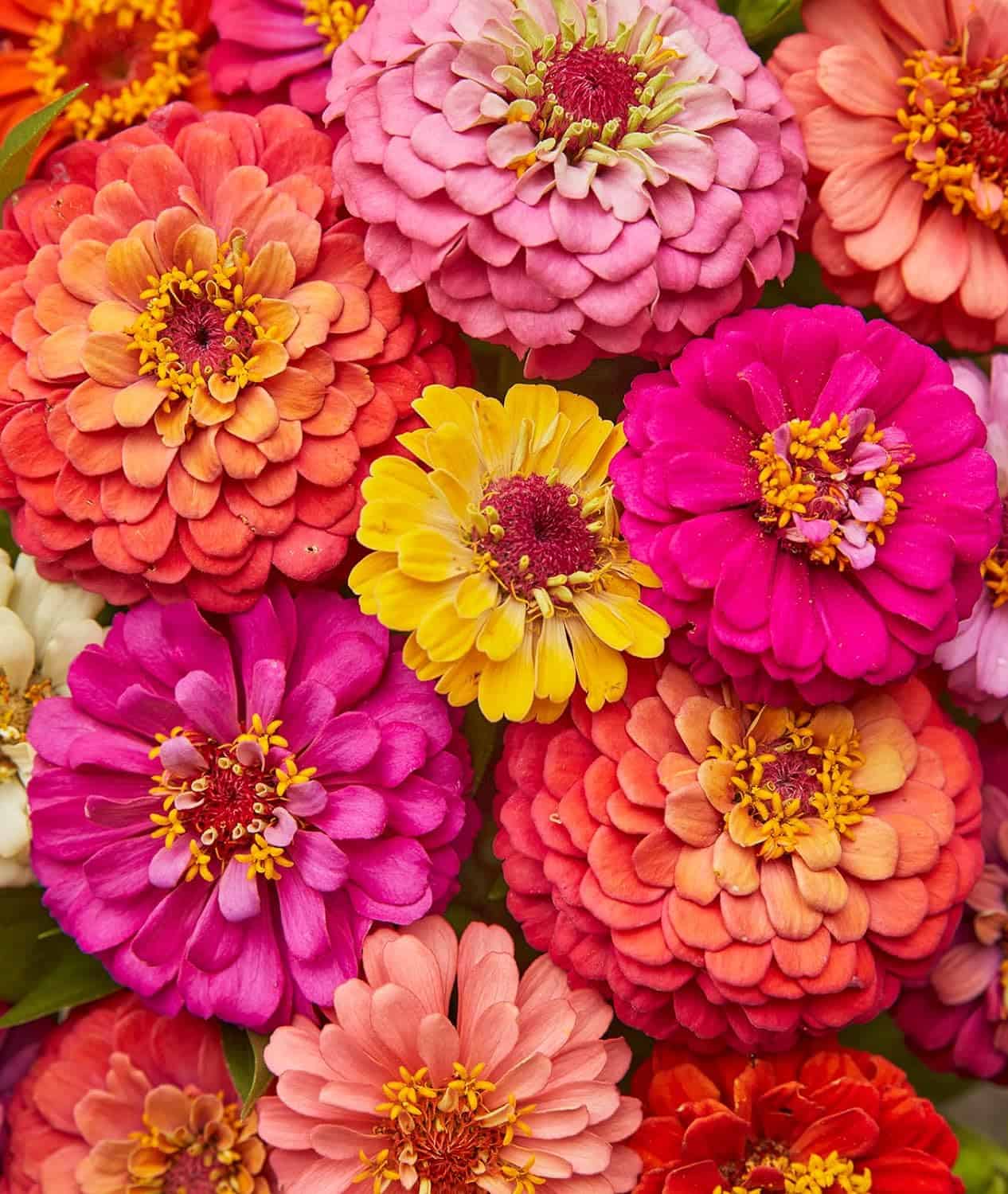When it comes to gardening, zinnias are a popular choice for their bright and colorful blooms. However, to ensure that your zinnias reach their full potential, it’s important to know when to pinch them.
This post may contain affiliate links.
Pinching is the act of removing the top growth of a plant, and it can have a significant impact on the growth and appearance of your zinnias.
Pinching zinnias is typically done to encourage bushier growth and more blooms. By removing the top growth, you’re redirecting the plant’s energy to the side shoots, which will result in a fuller, more compact plant.
Additionally, pinching can help to prevent leggy growth and promote a more uniform shape. However, timing is key when it comes to pinching zinnias, as doing it too early or too late can have the opposite effect.
Understanding Zinnias and Their Varieties
Zinnias are a popular choice among gardeners due to their easy-to-grow nature and wide range of colors. Understanding the different species and growth habits of zinnias can help you determine the best time to pinch them for optimal growth and flowering.
Related Article: How to Deadhead Zinnias: A Friendly Guide
Zinnia Species and Growth Habits
The most common species of zinnias is Zinnia elegans, which is known for its single, double, and semi-double flower forms. Zinnia elegans can grow up to 3 feet tall and produces bright, colorful blooms in a wide range of colors, including red, orange, yellow, pink, and purple.
Another popular species is Zinnia angustifolia, which has a more compact growth habit and produces smaller, daisy-like blooms in shades of orange, yellow, and white.
Zinnia haageana, also known as Mexican zinnia, is a heat-tolerant species that produces bright, daisy-like blooms in shades of yellow, orange, and red.
Burpee Cut & Come Again Zinnia Seeds 175 seeds
Color Variations and Flower Structures
Zinnias come in a variety of colors, including bright shades of red, orange, yellow, pink, and purple, as well as pastel shades of peach, lavender, and cream. Zinnias also have a variety of flower structures, including single, double, and semi-double forms.
Single zinnias have a single row of petals around a central disk, while double zinnias have multiple layers of petals that give them a fuller, more rounded appearance.
Semi-double zinnias have a combination of single and double petals, with a row of single petals around the outside and multiple layers of petals in the center.
Understanding the different varieties and growth habits of zinnias can help you determine the best time to pinch them for optimal growth and flowering. By pinching back the growing tips of zinnias, you can encourage bushier growth and more prolific flowering.
Optimal Conditions for Zinnias
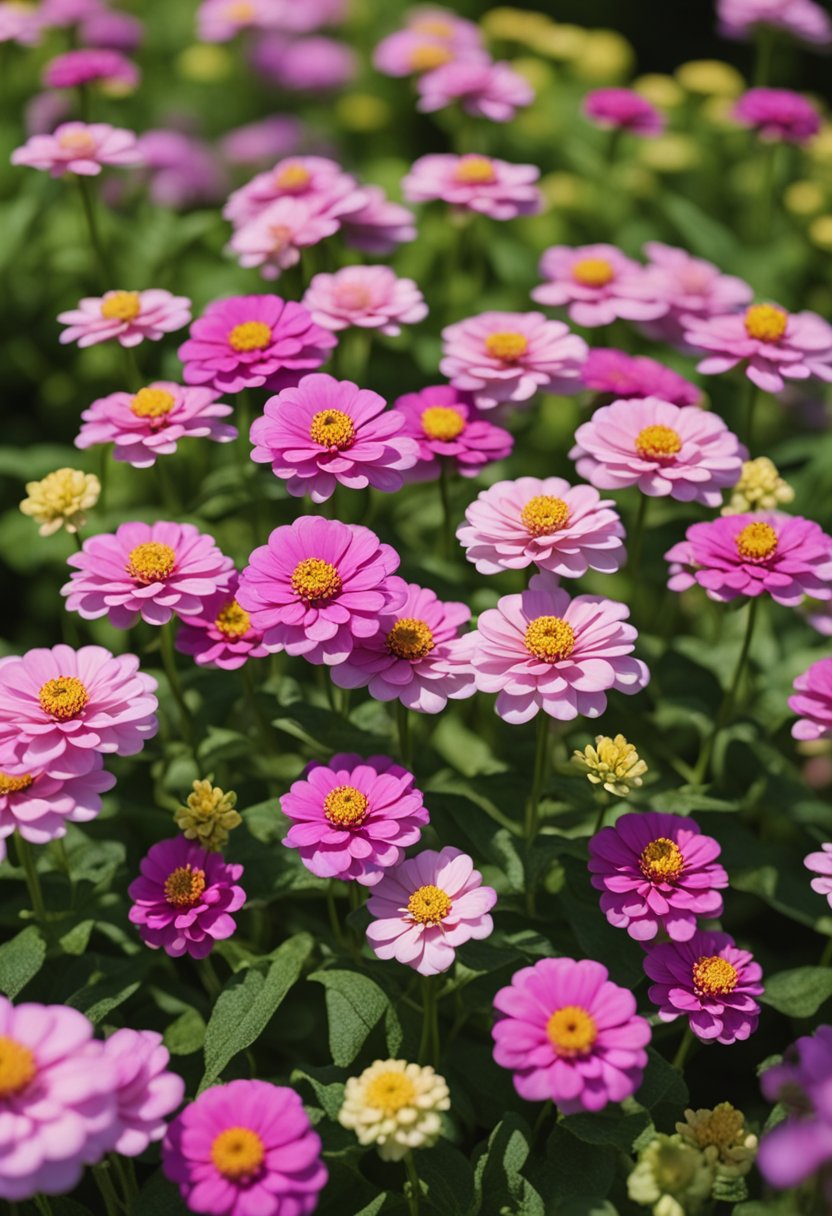
Soil and Sunlight Requirements
Zinnias are sun-loving plants that require at least 6 hours of full sun each day to thrive. They prefer well-drained soil that is rich in organic matter. If your soil is heavy or clayey, consider adding compost or other organic matter to improve drainage and soil structure.
When planting zinnias, make sure to space them at least 6 inches apart to allow for good air circulation. This will help prevent disease and ensure that each plant gets enough sunlight.
Watering and Fertilization
Zinnias require regular watering, especially during hot, dry weather. Water deeply once or twice a week, making sure to soak the soil to a depth of at least 6 inches. Avoid getting water on the leaves, as this can lead to fungal diseases.
To promote healthy growth and abundant blooms, fertilize your zinnias every 4-6 weeks with a balanced, water-soluble fertilizer. Be sure to follow the manufacturer’s instructions for application rates and timing.
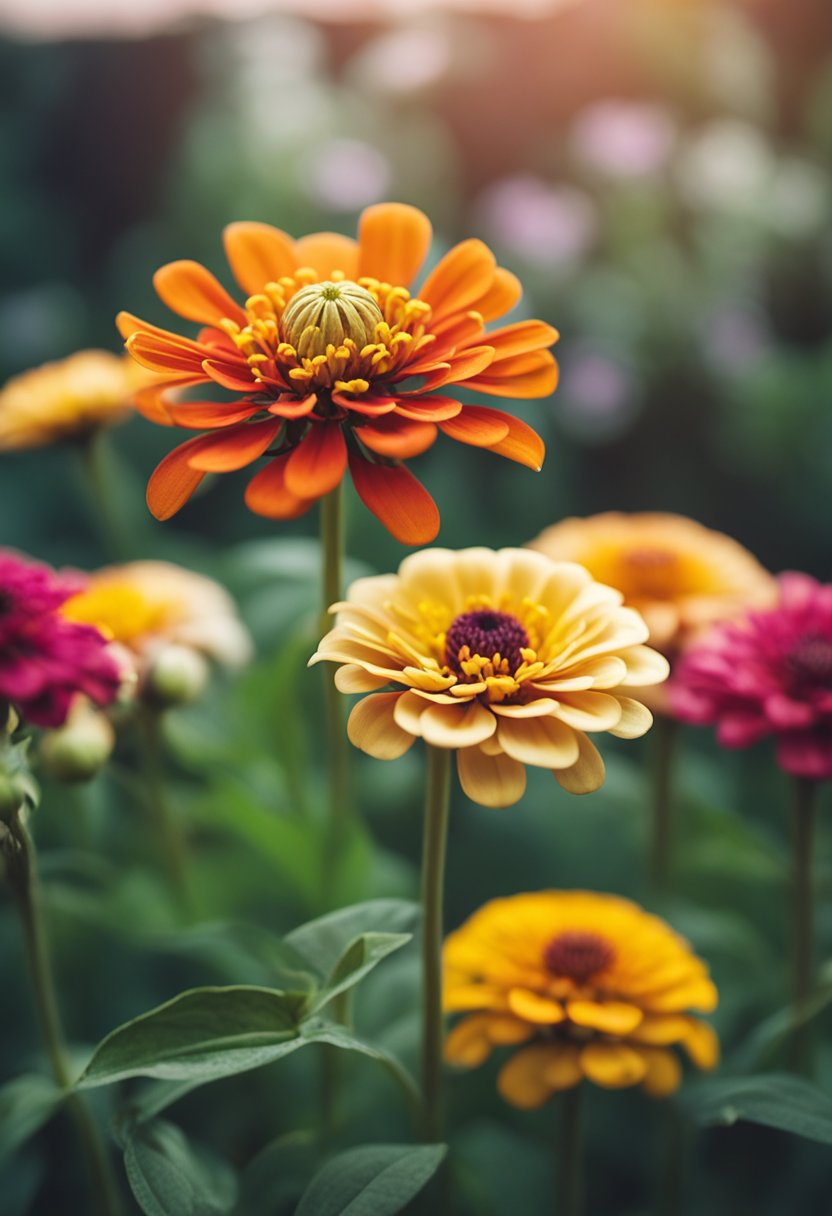
Planting and Propagating Zinnias
Zinnias are beautiful and easy-to-grow flowers that can be grown from seeds or seedlings. Here are some tips on how to plant and propagate zinnias successfully.
Starting from Seeds
To start zinnias from seeds, you need to prepare a potting mix that is well-draining and nutrient-rich. You can either buy a commercial potting mix or make your own by mixing equal parts of peat moss, vermiculite, and perlite.
Sow the seeds directly into the potting mix, covering them with a thin layer of soil. Water the soil lightly and keep it moist until the seeds germinate, which usually takes about 7-10 days.
Once the seedlings have grown their first true leaves, you can transplant them into individual pots or into your garden bed. Make sure to give them enough space to grow and thrive.
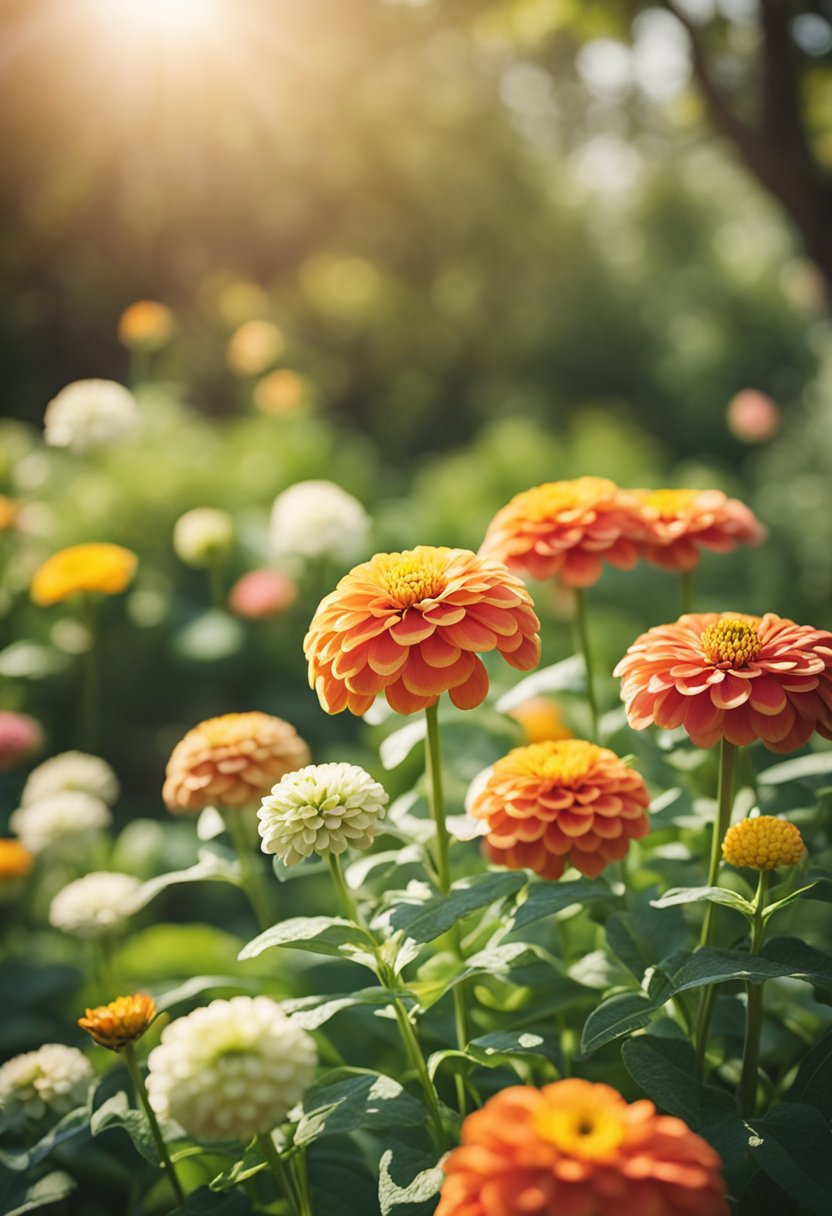
Transplanting Seedlings
If you prefer to start with seedlings, you can buy them from a garden center or grow them yourself by propagating zinnia cuttings.
To propagate zinnia cuttings, simply cut a stem from a mature plant, remove the lower leaves, and place the stem in a potting mix. Keep the soil moist and wait for the cutting to root.
When transplanting seedlings, make sure to choose a sunny spot in your garden with well-draining soil. Dig a hole slightly larger than the root ball of the seedling and gently place it in the hole. Backfill the hole with soil and water the plant thoroughly.
Maintaining Healthy Zinnia Plants
Zinnias are beautiful and vibrant flowers that can add a pop of color to any garden or landscape. To ensure that your zinnia plants remain healthy and produce an abundance of blooms, there are a few things that you can do.
Pinching for Fuller Growth
Pinching is a technique that involves removing the tip of the stem to encourage branching and fuller growth. This is especially important for zinnias, as it can help to promote a more compact and bushy plant.
Pinching should be done when the plant is young and has at least four sets of leaves. Simply use your fingers or a pair of sharp scissors to remove the top inch or so of the stem.
Dealing with Pests and Diseases
Like any plant, zinnias are susceptible to pests and diseases. Two common problems that you may encounter are powdery mildew and rot.
Powdery mildew is a fungal disease that appears as a white or gray powder on the leaves and stems of the plant. To prevent powdery mildew, ensure that your zinnias have adequate air circulation and avoid overhead watering. If you do notice powdery mildew, you can treat it with a fungicide.
Rot is another common problem that can affect zinnias. This can be caused by overwatering or poor drainage. To prevent rot, ensure that your zinnias are planted in well-draining soil and only water when the top inch of soil is dry to the touch.
In addition to these diseases, zinnias can also be affected by pests such as aphids and thrips. If you notice these pests on your plants, you can use insecticidal soap or neem oil to control them.
Enjoying Zinnias in Your Garden
Zinnias are a popular choice for gardeners who want to add a splash of color to their summer garden. Not only are they easy to grow, but they also attract pollinators such as butterflies and bees, making them a great addition to any garden. Here are some tips for enjoying zinnias in your garden.
Cutting and Arranging Zinnias
One of the best things about zinnias is that they make great cut flowers. If you want to bring some of that beauty inside, simply cut the flowers when they are fully open and place them in a vase with fresh water.
To ensure that your zinnias last as long as possible, change the water every few days and trim the stems at an angle.
If you want to create a stunning bouquet, try mixing different colors and varieties of zinnias. You can also add other flowers and greenery to create a more complex arrangement. Don’t be afraid to experiment and have fun with it!
Attracting Wildlife with Zinnias
Zinnias are not only beautiful, but they also attract a variety of pollinators to your garden. Butterflies and bees love zinnias because they are rich in nectar and pollen. By planting zinnias in your garden, you can help support these important pollinators and do your part to protect the environment.
To attract even more pollinators, try planting a variety of flowers that bloom at different times throughout the season. This will provide a continuous source of food for bees and butterflies, ensuring that they keep coming back to your garden year after year.
Frequently Asked Questions
How do I encourage bushier growth in your zinnias?
To encourage bushier growth in your zinnias, you should pinch back the tips of the main stems. This will encourage the plant to grow more side shoots, resulting in a fuller and bushier plant.
What is the proper technique for pinching out zinnias?
To pinch out zinnias, use your thumb and forefinger to gently pinch off the top few inches of the stem, just above a set of leaves. This will encourage the plant to branch out and grow more flowers.
At what stage of growth should zinnias be pinched?
Zinnias should be pinched when they are about six inches tall and have four to six leaves. This will help the plant develop a strong, bushy structure and produce more flowers.
Can pinching zinnias lead to more abundant blooms?
Yes, pinching zinnias can lead to more abundant blooms. By pinching back the tips of the stems, you are encouraging the plant to produce more side shoots, which will result in more flowers.
Is there a specific time of year that is best for pinching zinnias?
You should pinch zinnias in the early summer, when the plants are actively growing and producing new growth. This will give the plant plenty of time to recover and produce more flowers before the end of the growing season.
What are the consequences of not pinching back zinnia plants?
If you don’t pinch back your zinnia plants, they will become tall and leggy, with fewer flowers. The plant will put all of its energy into growing taller rather than producing more flowers.
Follow my zinnia garden board on Pinterest.

